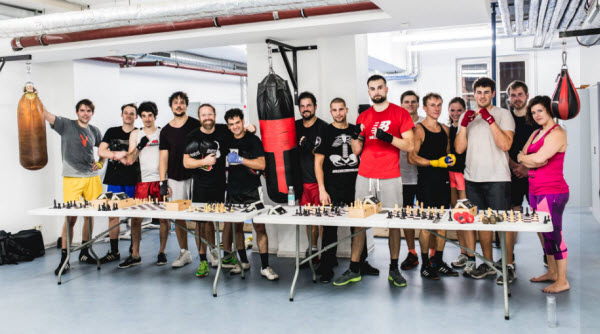In the world of competitive individual sports, there exists a fascinating blend of mental and physical challenges—chess boxing. This sport combines the physical intensity of boxing with the strategic depth of chess, creating a unique and engaging competition. Despite its relative novelty, chess boxing has garnered significant attention and has become popular among enthusiasts worldwide. It features international organizations that set the rules and regulations for the sport, which is currently being explored as an effective method to enhance both physical and psychological attributes in athletes, as well as improve the overall well-being of teenagers.

The concept of chess boxing is believed to have originated from a boxing club outside London in the late 1970s. The Robinson brothers were known for playing a game of chess against each other after their boxing training sessions. This concept was first formalized in a kung fu film produced in 1979. In 2003, Dutch artist Iepe Rubingh hosted the first official chess boxing event, inspired by a satirical book published in 1992 by French author Enki Bilal. The book depicted a world championship in chess where opponents first competed in a full boxing match before facing off in chess. Rubingh developed this idea into a competitive sport with alternating rounds of chess and boxing, governed by a detailed set of rules.

The first competition took place in Berlin, Germany, in 2003, and the inaugural world championship was held in Amsterdam the same year, in collaboration with the Dutch Boxing Federation and the Dutch Chess Federation. Dutch middleweight fighters Iepe Rubingh and Jan-Louis Finstra faced off, with Rubingh winning in the eleventh round after his opponent exceeded the chess time limit, thus becoming the first world champion. Over the years, disagreements among champions about standardized rules led to the formation of two main governing bodies by 2012: the World Chess Boxing Organization (WCBO) based in London, known for its festive atmosphere and large audiences, and the World Chess Boxing Association (WCBA) based in Berlin, which organizes more serious matches.

The sport expanded internationally, with the first European championship held in Berlin two years after the inaugural world championship. The International Chess Federation (FIDE) officially recognized chess boxing in 2008. Chess boxing clubs were established in the UK, Russia, and Los Angeles (the first in the US) in 2009, followed by a New York club. In 2012, the first international club match took place between Berlin and London, with London winning overall. The sport also began to gain traction in Asia, starting in India, and continued to grow in Europe and America, with calls to include it in the Olympic Games.

Chess boxing matches are governed by a set of specific rules. Each match consists of 11 alternating rounds between chess and boxing—six rounds of chess, each lasting four minutes, and five rounds of boxing, each lasting three minutes. Matches begin and end with chess, with each player having a total of nine minutes on their chess clock. During chess rounds, players remove their boxing gloves and wear earplugs to block out noise and avoid distractions. The chess moves are recorded, and pieces are set up for the next boxing round. The match concludes when one player achieves a knockout in boxing, checkmates in chess, wins due to the opponent exceeding the chess time limit, or wins by default in either game. Judges can disqualify players for rule violations or intentional delays. If chess ends in a draw before the final round, an additional boxing round is held. If this round also ends without a clear winner, the boxer with the higher score wins the overall match. If the match ends in a tie, the player with the black chess pieces wins, though ties are extremely rare.

Chess boxing, like traditional boxing, has weight categories: light (up to 70 kg), middle (80 kg), light heavyweight (90 kg), and heavyweight (over 90 kg) for men; and light (55 kg), middle (65 kg), light heavyweight (75 kg), and heavyweight (75 kg) for women. To compete, players must be skilled in both chess and boxing, with at least 50 amateur boxing matches or similar combat sports experience. They must train intensively in fast-paced chess and adapt to the continuous switch between full-contact boxing and strategic chess. After three minutes of boxing, competitors face each other on the chessboard, having had only a brief rest, and must perform calmly and strategically. This transition becomes increasingly challenging as the match progresses.
